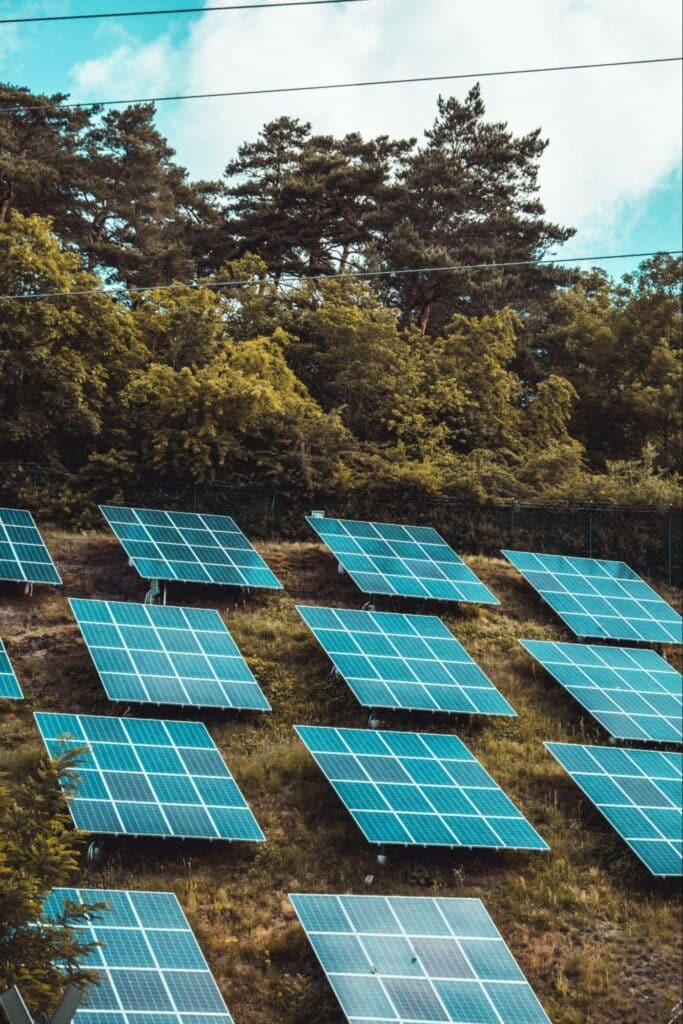By: Samantha Williams
Sustainability has become a pivotal consideration in the design and operation of healthcare facilities worldwide. As the impacts of climate change become more pronounced, the healthcare sector is recognizing its responsibility to minimize its environmental footprint while enhancing patient outcomes. Fertility and in vitro fertilization (IVF) centers, in particular, face distinctive challenges due to their specialized equipment, stringent cleanliness requirements, and energy-intensive processes.
Jacob Murphy, who previously served as a Director of Construction, Real Estate, and Design designing and building Fertility and IVF centers, explains the crucial intersection of sustainability and fertility/IVF center design. By adopting sustainable principles, these centers can reduce their ecological impact while improving patient well-being and operational efficiency. From innovative energy-saving technologies to thoughtful material choices, the implementation of sustainable practices offers a holistic approach to creating healthier environments for both patients and staff.
Understanding the Impact of Fertility/IVF Centers
Fertility and IVF centers, integral to the reproductive health sector, possess a notable environmental footprint marked by significant energy consumption, waste generation, and water usage. The sophisticated equipment required for assisted reproductive technologies demands substantial energy inputs, contributing to their high operational costs and environmental impact.
The stringent cleanliness standards necessitate frequent disposal of single-use items, leading to substantial waste generation. Ethically, the intersection of fertility treatments and sustainability is a complex terrain.
“While these treatments offer hope and fulfillment to many, they also raise questions regarding resource allocation and environmental responsibility,” says Jacob Murphy. “Balancing the pursuit of successful outcomes with sustainable practices is imperative for these centers.”
In alignment with broader healthcare sustainability goals, fertility/IVF centers are increasingly scrutinizing their environmental impact. By assessing and mitigating the energy demands, waste streams, and water usage inherent in their operations, these centers can navigate the ethical and ecological challenges they face. This holistic approach aligns with sustainable development objectives and enhances the overall quality of care provided to patients.
Principles of Sustainable Design in Fertility/IVF Centers
Implementing sustainable design principles in fertility/IVF centers is paramount to reducing their environmental impact and enhancing patient experiences. Key principles include a focus on energy efficiency, waste reduction strategies, and the incorporation of biophilic design elements.
Energy efficiency stands as a cornerstone of sustainable design, encompassing measures such as efficient lighting systems, optimized HVAC (heating, ventilation, and air conditioning) systems, and the utilization of renewable energy sources where feasible. By reducing energy consumption, these centers not only lessen their carbon footprint but also lower operational costs.
Waste reduction strategies are crucial in mitigating the significant amount of waste generated by fertility/IVF centers. Implementing practices like recycling programs, composting organic materials, and using reusable medical equipment can substantially decrease their environmental impact.
Integrating biophilic design elements, such as natural light, indoor plants, and access to green spaces, can greatly improve patient well-being and comfort. Studies have shown that exposure to natural elements can reduce stress, enhance mood, and promote faster recovery.
Notes Jacob Murphy Australia, “By adhering to these sustainable design principles, fertility/IVF centers can create spaces that promote healing, reduce environmental harm, and align with the values of both patients and staff.”
Innovations in Sustainable Technology
Advancements in sustainable technology are revolutionizing the landscape of fertility/IVF centers, offering innovative solutions to reduce environmental impact and improve operational efficiency. These centers are increasingly embracing cutting-edge technologies that align with sustainability goals.
Energy-efficient equipment is a focal point of these advancements. From state-of-the-art incubators to low-energy lighting systems, these technologies are designed to minimize energy consumption without compromising the quality of care. The integration of smart systems allows for precise monitoring and control of energy usage, optimizing efficiency.
In the realm of waste management, new systems and processes are being developed to streamline recycling efforts and reduce waste generation. From automated sorting technologies to closed-loop systems, these innovations aim to minimize the environmental footprint of fertility/IVF centers.
Renewable energy integration is another area of rapid development. Solar panels, geothermal systems, and wind turbines are being installed to harness clean energy sources, reducing reliance on traditional power grids and lowering carbon emissions.
By showcasing these innovations in sustainable technology, fertility/IVF centers can inspire industry-wide adoption and contribute to a greener future for healthcare. These advancements not only benefit the environment but also enhance the resilience and efficiency of these vital healthcare facilities.

Overcoming Challenges and Implementing Solutions
While the benefits of sustainable practices in fertility/IVF center design are substantial, there are notable challenges that organizations must navigate to successfully implement these initiatives. Key hurdles include cost constraints, regulatory barriers, and the specialized nature of these healthcare facilities.
“Cost constraints often pose a significant challenge, especially for smaller centers or those operating on tight budgets,” says Murphy.
The initial investment required for energy-efficient equipment and sustainable technologies can be substantial. However, it’s important to recognize that these investments typically yield long-term savings through reduced energy bills and operational costs.
Regulatory barriers, including stringent healthcare regulations and building codes, can also hinder the implementation of sustainable practices. Navigating these regulations requires careful planning and coordination with regulatory bodies to ensure compliance while pursuing sustainability goals.
Practical strategies for overcoming these challenges include collaboration with sustainability experts and consultants. These professionals can guide the most cost-effective and impactful sustainability measures tailored to the unique needs of fertility/IVF centers.
Leveraging available incentives and grants can offset upfront costs and encourage the adoption of sustainable practices. Many governments and organizations offer financial support for sustainable initiatives, making it more feasible for centers to invest in environmentally friendly solutions.
By addressing these challenges proactively and implementing practical strategies, fertility/IVF centers can overcome barriers to sustainability and create facilities that promote both environmental stewardship and exceptional patient care.
Moving forward, it is crucial for stakeholders in the healthcare industry to recognize the value of sustainability in fertility/IVF center design. This is not just an ethical imperative but a strategic one as well. Investing in sustainable practices not only benefits the environment but also contributes to cost savings and long-term resilience.
Published by: Martin De Juan



















